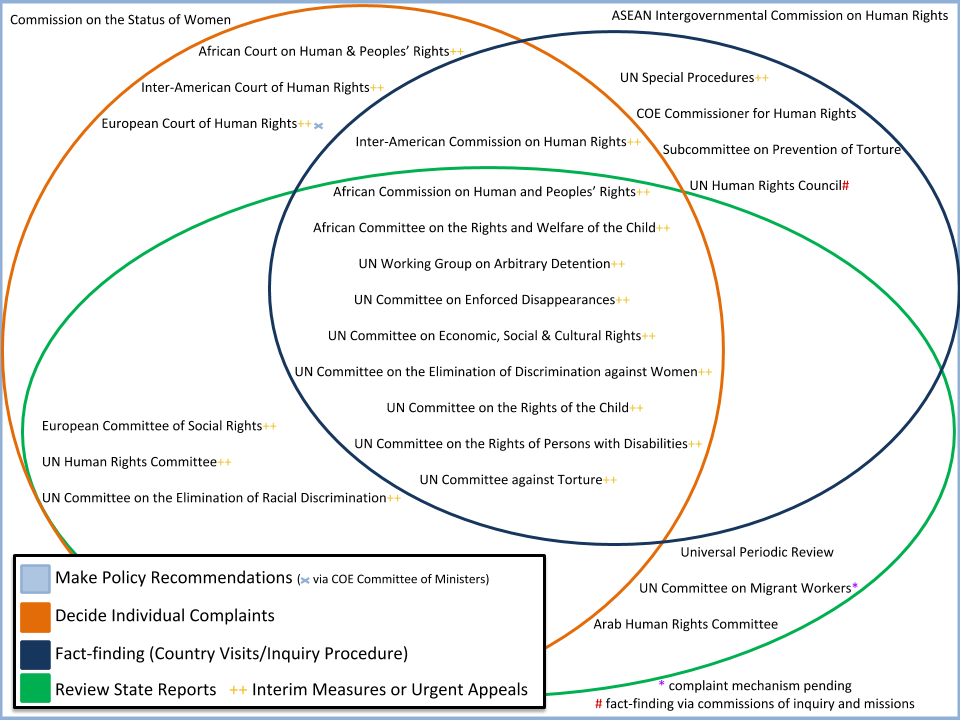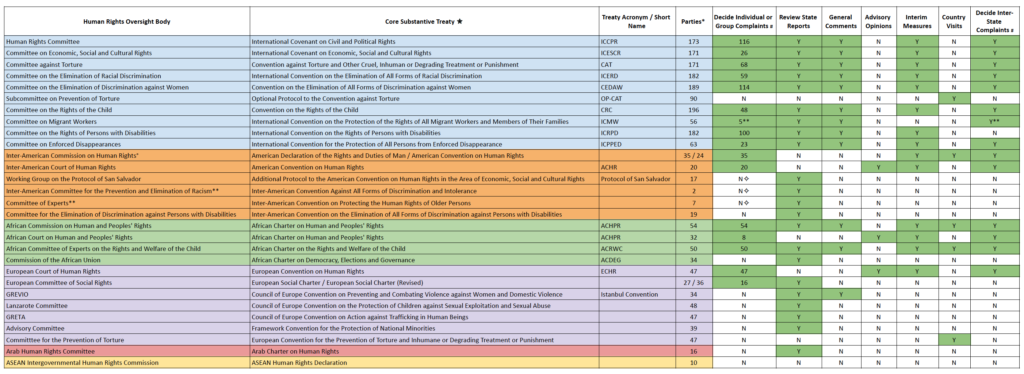A number of distinct courts and monitoring bodies oversee States’ implementation of, and compliance with, their specific obligations under international human rights law. These bodies may be judicial (national, regional or international courts), quasi-judicial (bodies that are not courts, but do decide individual complaints), political (led by States), or supervisory (documenting and assessing human rights conditions). Each of these entities has been established either directly by individual States or by groups of States, as members of intergovernmental organizations.
Use the links below to learn more about each human rights oversight system. For an explanation of the history of these bodies, and the standards they enforce, see the Overview of the Human Rights Framework. Alternatively, click on the image below to open a PDF version of the diagram with hyperlinks to explanations of each body.
Additionally, our quick reference chart identifies the mechanism(s) responsible for interpreting and applying each of the principal UN and regional human rights treaties, and lists their competencies, along with links to more information.
United Nations
At the universal level, the United Nations has established a number of institutions and procedures to monitor human rights in the 193 countries that belong to the UN. These mechanisms include the:
- United Nations human rights treaty bodies
- United Nations independent experts (special procedures)
- Universal Periodic Review
- United Nations Human Rights Council
In addition, the International Labour Organization (ILO) creates international standards related to workers’ rights and social justice issues, and supervises their implementation in the ILO’s 185 Member States.
Regional Human Rights Systems
At the regional level, intergovernmental organizations have established regional human rights systems, with widely different mandates, in each of the following regions:
- Africa
- the Americas
- Europe
- the Middle East
- Southeast Asia
Other Supranational Courts
The international community has also created a variety of other international courts and organizations that are not exclusively focused on international human rights standards, but whose work often addresses human rights concerns.
These include the International Court of Justice, which settles a wide variety of disputes between States, and the following courts that prosecute individuals for violations of international law:
- International Criminal Court
- International Criminal Tribunal for the former Yugoslavia
- International Criminal Tribunal for Rwanda
- other internationalized or hybrid criminal tribunals
The following courts and tribunals of regional economic communities sometimes also directly or indirectly address human rights concerns:
- Caribbean Court of Justice
- Central American Court of Justice
- Common Market for Eastern and Southern Africa Court of Justice
- Court of Justice of the Andean Community
- Court of Justice of the European Union
- East African Court of Justice
- Economic Community of West African States Court of Justice
- Southern African Development Community Tribunal
National Courts & Monitoring Bodies
Additionally, national governments may address human rights conditions and alleged violations through:


